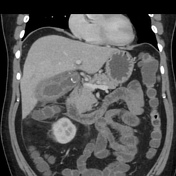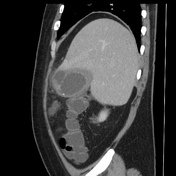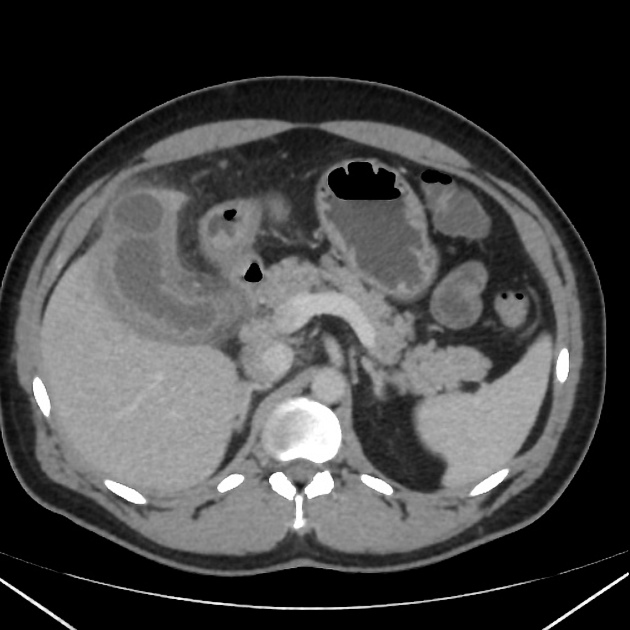Presentation
Intermittent upper abdominal pain
Patient Data







Diffusely thickened gallbladder wall with mild pericholecystic free fluid. Submucosal hyperenhancement. Multiple approximately 3 mm sized calcified calculi seen. A larger rounded calculus with peripheral egg shell calcification is seen in the neck of gall bladder. A thickened fold is seen in the fundal region. There is secondary altered perfusion in segment IV of liver with areas of suspicious subsegmental filling defects in portal venous branches - possibly chronic portal venous thrombosis.
Case Discussion
Recurrent inflammation of the gallbladder secondary to chronic stone disease and stasis is bound to present with multiple intermittent flare ups. Cholecystitis can result in complications like subsegmental portal vein thrombosis. Long standing inflammation is also a precursor for gallbladder neoplastic transformation and needs to be treated.




 Unable to process the form. Check for errors and try again.
Unable to process the form. Check for errors and try again.